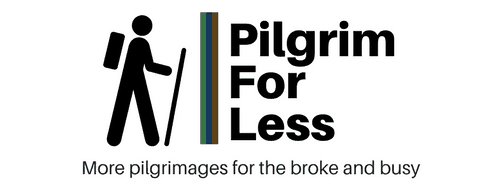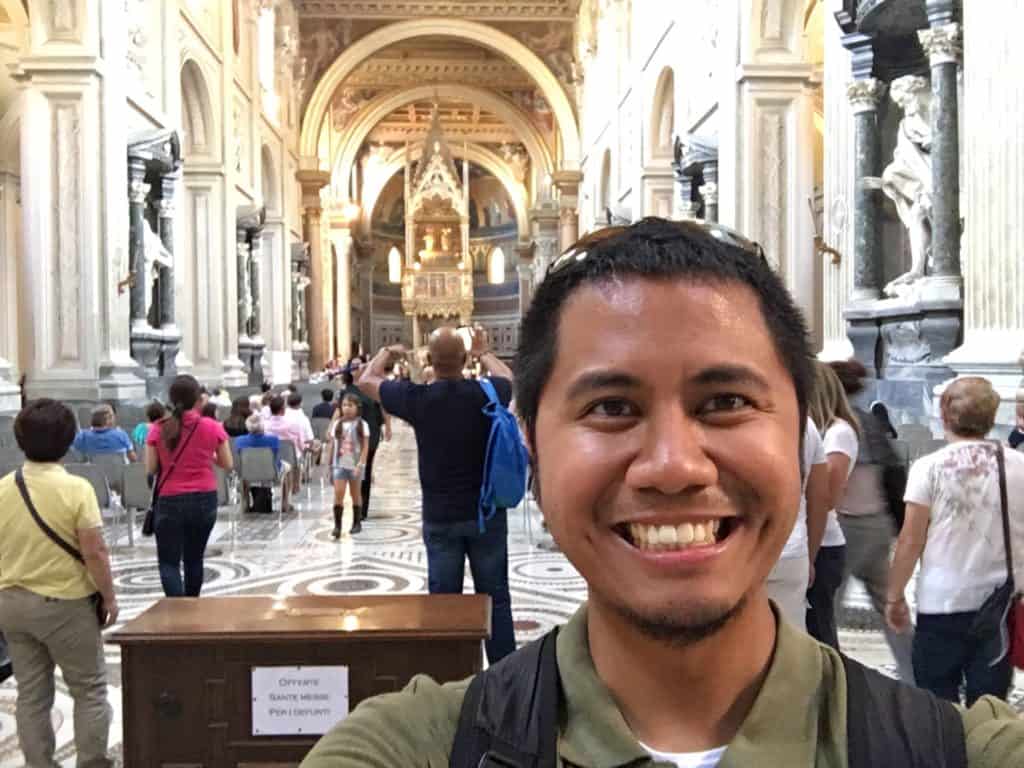Before starting Pilgrim for Less, I sent out a survey to a handful of friends. One of the questions I asked was “Describe your ideal pilgrimage”. I received an interesting variety of responses, and I wanted to share with you some of those answers:
“with my family anywhere, anytime as long as we are complete, to know more about Jesus”
“Tour of churches in Rome with lots of time for silence”
“My ideal pilgrimage is one that is financially affordable and one that entails making sacrifices, and one that offers many holy places.”
“The Camino de Santiago (translated as “the Way of St. James”) in Europe. It is a 500 mile long network of pilgrim walking trails that all come together at the tomb of Saint James in Spain. It takes between 10 and 30 days to complete the walk depending on your pacing. I want to embark on this pilgrimage because it is primarily a religious journey and the idea of discovering more about myself and other Catholics that I will meet along the way who are making that same journey excites me.”
“A lot of time for prayer and the Sacraments. A place with lots of Church history or tied to some great saints. Places where Holy events have taken place. Both alone and with others. I also really enjoy experiencing Holy Mother Church in different parts of the world. I love knowing that people on the other side of the world share the same faith as me.”
“Wine, mass, prayer, great food. Mass. Adoration. with friends. Affordable. so maybe have to take out the “great” food? Wine. Learning new Catholic things/history with great Catholic friends. Mass. Adoration. Wine. Chocolate.”
“I’d love to go to both the Holy Land and Medjugorje; 4 days for Medjugorje and at least 7 days for the Holy Land; Id rather go to Medjugorje with a small group but for the Holy Land id prefer to go in a bigger group, definitely with a priest; probably in the summer since that’s when I have time”
Recall what a pilgrimage is. From some of the responses above, I can somewhat tell where people are at regarding pilgrimages. Some are more destination-minded whereas some place more priority in the spiritual aspect. Some people are thinking about the practical things like how much it costs, and some consider ideal pilgrimages to be a little more vacation-like. Interesting, because I know we’re looking at a spectrum of understanding here.
Is there a “right way” to go on a pilgrimage? I’m not sure, but I know that one’s approach to pilgrimages likely correlate with one’s level of spiritual maturity. Regardless of your spiritual maturity, my goal for Pilgrim for Less is to inspire and equip people to go on more pilgrimages but for less money and time. Hopefully, we can help each other level up and challenge each other to grow deeper in our faith through pilgrimages!
With that said, I realized that I haven’t thought too much about what I would consider to be an ideal pilgrimage. Giving it some initial thoughts and reflections, I concluded that an ideal pilgrimage for me doesn’t have to be necessarily somewhere specific, but I wouldn’t fight the idea of going to places like the Holy Land, Rome, the Camino de Santiago, Lourdes, Fatima, and all the other hotspots.
Really, for me, I would say that my ideal pilgrimage would contain these certain elements:
An ideal pilgrimage has…
Places to visit that are NOT my home parish.
My home parish is the normal and ordinary location of encountering God in His Word and Body. I could make the simple act of going to Mass on Sunday into a pilgrimage, but I would have a harder time making it feel different enough to not make it feel like I’m just going through the motions. That’s why going somewhere other than my home parish would be ideal for a pilgrimage. Unfamiliar places or revisiting the cool ones for different reasons make it interesting enough.
Visiting places that are conducive to encountering God.
Obviously, these places would be like churches, shrines, chapels, or other holy sites. However, I also like encountering the beauty of encountering God’s Creation in nature through visiting parks or going hiking. Even visiting museums can be an experience of encountering God! When I visited Hiroshima’s Atomic Bomb Museum in their Memorial Park, they have a stone sculpture in the lobby with a quote from Pope St. John Paul II on the atrocity of using nuclear weapons. When I visited Nagasaki’s Memorial Museum, they feature Dr. Takashi Nagai, a Catholic doctor that saved and healed many other bomb victims despite his own injuries, and later at St. Max Kolbe’s friary and museum, I learned more about Dr. Nagai. How cool!
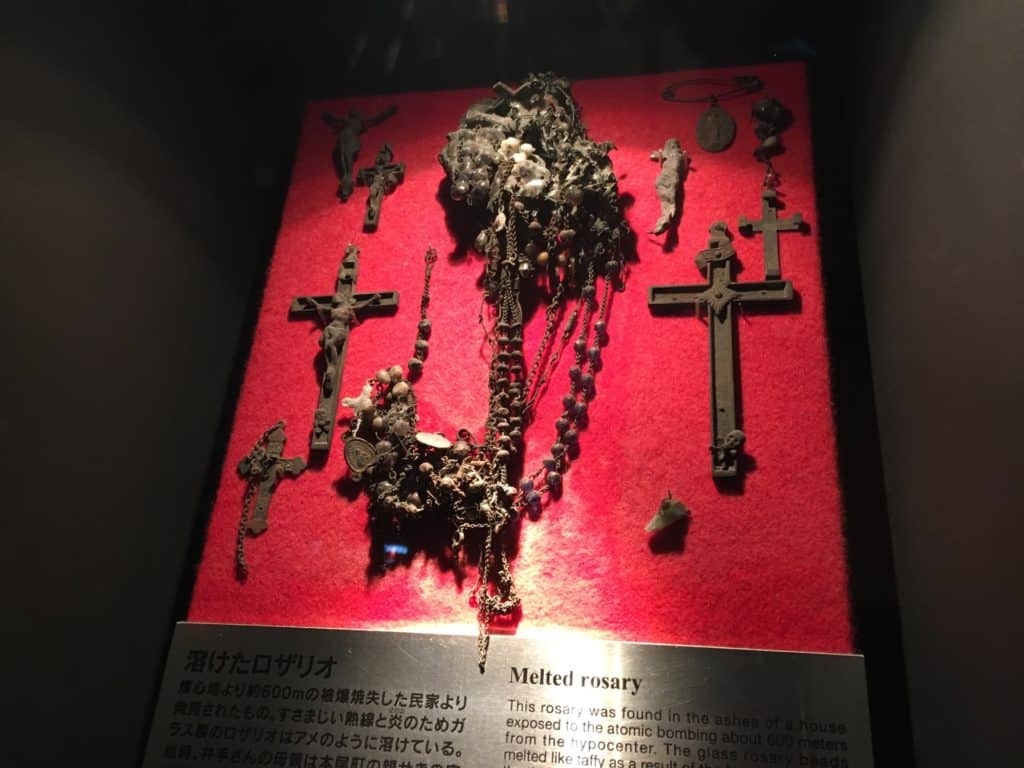
Other travelers besides me.
I’ve solo-traveled a lot in the past few years, and that’s been pretty great. However, there have been times when I’ve been out on my own where I wished I had some pilgrimage or travel companions. At the same time, I think a small group would be more ideal than having to manage a huge group. I’m talking like less than 10 for a small group. Any more than that, and it becomes a struggle (see next point).
Everyone on the same page.
I’ve chaperoned pilgrimages due to my involvement in youth ministry. Primarily, the World Youth Days in 2013 and 2016. In 2013, we took two youth groups totaling about 20 or so youth with a handful of adult chaperones. In 2016, we took 200+ people from my diocese. What made the 2013 World Youth Day pilgrimage “smoother’ was that it was easier to manage expectations due to the smaller amount of people involved. Whenever plans got thrown out the window or when discomforts and sufferings occurred, it was easy to get everyone on the same page and handle/endure it together.
In 2016, on the other hand, managing expectations was much more difficult! I would say because there were way more people involved who were at different levels of spiritual maturity and who had different expectations of what the pilgrimage was intended for. Therefore, an ideal pilgrimage for me ought to have everyone with the same understanding of what to expect and at least be respectful of allowing opportunities for spiritual growth.
A willingness to take on suffering or fasting.
I think a good spiritual practice for pilgrimages is to take on a form of penance. The easiest way is to choose something to fast from like going on social media, listening to music, taking public transportation, etc. On my first pilgrimage report, I mentioned that I gave up listening to music while driving in my car and using my phone as much as possible during my hike. While we can choose something to fast from, sometimes encountering moments of suffering just … happens. A good example of that was when I chaperoned a group of youth to our annual March for Life pilgrimage to Washington, DC. The last time I went, we got snowed in!

So much snow fell on the ground that it basically caused us to be stuck at the parish we were staying at. That essentially threw off most of our itinerary, and we had to dig ourselves out in order to walk around. I think an ideal pilgrimage needs to have a willingness to suffer because things don’t always go perfectly.
A physical challenge.
I think this is best reflected in the international World Youth Days. To wrap up the week of events for World Youth Day, everyone congregates to a large open area to have a vigil and Adoration with the Holy Father, camp out for the night, and then have the closing Mass. The walk to the site is very much intended to give everyone pilgrimage feels. You’re carrying everything you need to camp out, the distance can be long, and the conditions may not be ideal. For World Youth Day 2016, it was pretty hot the day we walked to the site, and due to how they laid out the paths, we got stuck in multiple bottlenecks of thousands of other pilgrims trying to get the same place.
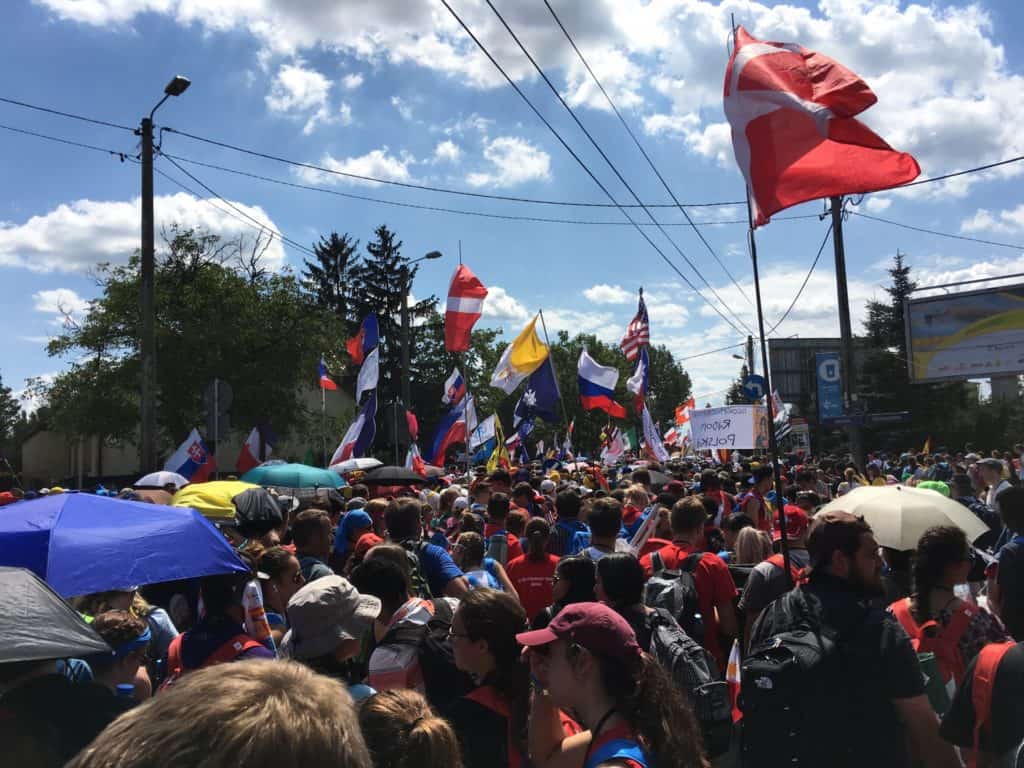
When I went to Nagasaki in 2017 to visit churches and to learn more about St. Paul Miki and his other martyr companions, I walked everywhere except the few times I took the trolley in order to get further across town. And the Camino de Santiago, every pilgrim’s bucket list item, is all about walking long distances.
Expert guides, if used.
Packaged pilgrimages tend to include tour guides. I’ve had really excellent ones who were really knowledgeable about history and the significance of places or things. I appreciate learning history and learning more about the Church through a guide who really knows their stuff. Even if I’m touring the Vatican, and it’s kind of obvious that my guide is not Catholic, as long as they really know their stuff and is respectful of the Christian faith, I’m cool with it. What I’m not a fan of is when tour guides offer seemingly scandalous information that’s simply untrue. I also don’t require a guide with the official title of “Guide”. When I went to Mother Teresa’s canonization in 2016 with a friend, that friend led the way visiting many churches in Rome that I had no idea about due to his previous trips. He showed me churches that contained relics from Jesus’ Passion, which I didn’t even hear about on my prior trip/tour around Rome. Ideally, having a guide makes the experience better, but only if they know their stuff and don’t trash the Church.
Times for prayer and reflection.
This is probably an obvious point. I know pilgrimages with aggressive itineraries leaning more towards visiting and seeing places while staying in nice hotels make it more tempting to enter into vacation mode. That’s fine, but I think in order to make a pilgrimage fruitful, setting aside time for prayer and reflection is ideal. If such times are built into the itinerary—great! If not, then I’ll try to invent times to pray and reflect. After all, I do one thing before every pilgrimage, and it’s a heavy responsibility.
Moments of being a tourist.
If I’m traveling somewhere, I like to take pictures especially if I’m somewhere iconic. I also like checking out good restaurants and visiting touristy places wherever I travel to. Since I currently hold top hotel and airline statuses, I’d like to utilize those in order to have a comfortable travel experience. In other words, I’m okay with having moments of being a tourist while on pilgrimage.
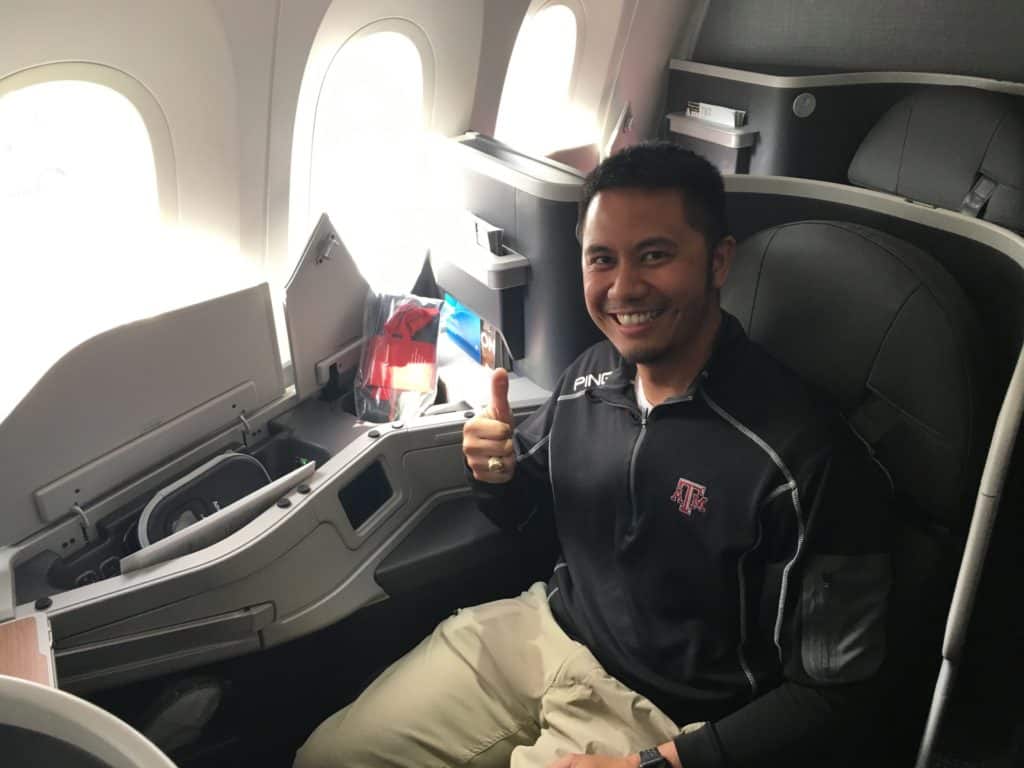
However! I see these more as a bonus and not a right or have-to-have. This attitude kind of plays into a willingness to take on suffering and having times for prayer and reflection. After all, pilgrimages are meant for one to encounter God, but it’s hard to do that when I’m too busy trying to eat at all the restaurants with the best Yelp reviews or doing all the tourist-trap stuff without being intentional about being on pilgrimage. Maybe the shorter way to say it is… for me, ideally, trips can have both a “tourist mode” and “pilgrimage mode”, but hopefully more emphasis on the “pilgrimage mode”.
Bottom Line
People can have a wide range of understanding regarding what pilgrimages are for and how’re they’re done. And that’s cool. And it makes sense, because we’re all at different places in our spiritual life. Those who more spiritually mature would probably treat pilgrimages with more seriousness and intentionality than someone who is less spiritually mature. Of course, it’s okay to be spiritually immature, but I would say pilgrimages are a great way to grow in one’s faith as long as the desire to grow is there along with an openness to God’s will to be done.
My ideal pilgrimage probably doesn’t look exactly the same as yours, and that’s totally fine. What we should focus on is helping each other on our earthly pilgrimage towards heaven!
Question for you—what do you think my elements of an ideal pilgrimage? Do you agree or disagree?

JR is a full-time engineer working in the aerospace industry. Apart from having such a fly job, he flies unto the arms of Our Lady and the Church pursuing his faith and a relationship with Christ. Over the past several years, faith and flying via pilgrimages became a thing. When he’s not being fly, JR hangs out with family, friends, his chihuahua, and with thoughts of the next trip.
